How Parks Canada saved this elk (and others) from icy waters
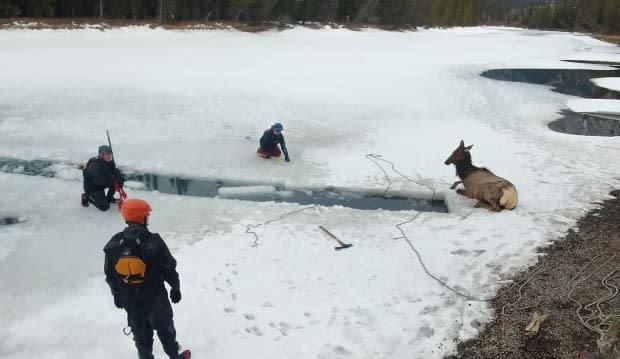
Rescuing elk from Alberta's freezing waters has been a frequent job for wildlife officers this year and about half the animals were saved; the rest died from injuries.
Last Friday, Parks Canada saved an elk after it had fallen through thin ice on the Bow River, right beside the Bow View Lodge in Banff, Alta.
Blair Fyten, a resource management officer for Parks Canada, has been a part of several elk rescue missions — especially this year.
WATCH | See how Parks Canada rescues an elk after it falls through the ice on the Bow River in the video above
"This year, it seemed to be extremely bad.… In the last couple of weeks, we dealt with nine elk in the river," he said, adding that since January, there have been 10 elk found struggling in icy waters.
Also known as the wapiti, the elk is a member of the deer family and is one of the largest land mammals in North America. A male can weigh over 700 pounds (317 kg).
In most years, only one or two elk need to be rescued. But when there are spikes, it's usually because of where the elk are located at the time, the officer says.

Fyten says most of the falls happen on a section of the Bow River in downtown Banff. The animals tend to cross the river — both by walking or swimming — so they can journey through the town at night.
"They're trying to come into town in the evenings when things have quieted down and to graze on the lawn at (Banff) Central Park and in people's yards," he said.
"There's great habitat on either side of the river, so they're crossing back and forth constantly."
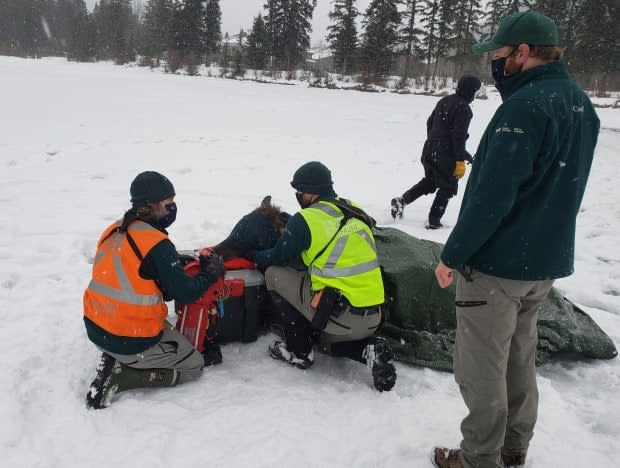
But the animals don't always know that the ice is too thin to walk on, says Fyten, and officers can't tell whether elk even give it much thought.
"We had a staff member kind of observe some elk a few days back that were crossing and she thought, you know, one was kind of testing the ice and was hesitant to go across, yet some other members had crossed in front of her," he said.
If the elk does break through the ice, Fyten says it's usually in a deep spot of the lake or river where they can't touch down.
"Basically, they're just sitting there swimming until either they get rescued or they drown," he said.
He says sometimes animals will fall through during the night and that officers won't know until someone reports a carcass in the river.
"Elk could fall through the river, you know, half a kilometre out of town somewhere farther to the west. And we might not even find out about it until we get a report of a carcass floating down the river in the springtime," he said.
Of the 10 elk found struggling in the water in 2021, five of them died, Fyten says.
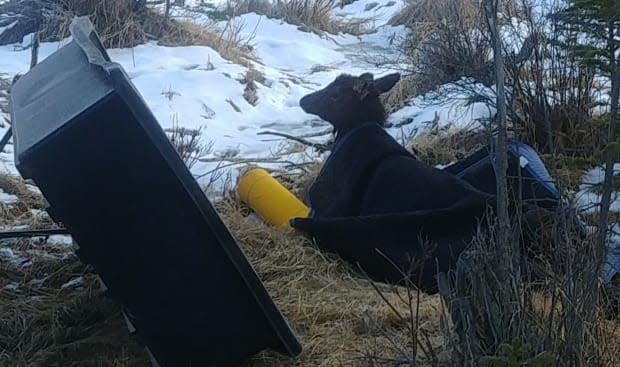
How officers save the elk
The wildlife officer explains that removing the animal from waters usually takes around two hours.
"It really depends how much work you need to do to get that elk on the ice.… The process generally involves cutting a channel back toward shore so that we get onto solid ice."
The team members will use chainsaws and other equipment to start cutting the thick slabs of ice. It also usually requires some of them getting into the freezing water.
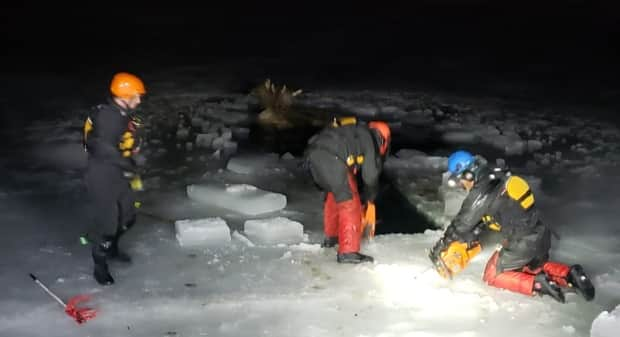
"I broke through myself several times, but we are in drysuits and have flotation vests on," he said.
After the ice is cut and the channel is cleared out, officers try to get the elk closer to shore.
"If they can't jump up onto the shore at that point in time — and most of these elk haven't been able to because they're just too weak — we've had to put straps underneath them and just haul them up onto the ice with manpower," he said.
But the job doesn't stop there. Fyten says a lot of these elk are still too weak to stand and sometimes need four hours to get their circulation going again.
"They're just too cold and legs are too weak, so we go through a warming process with them where we get them covered up with blankets and off the ice," he said.
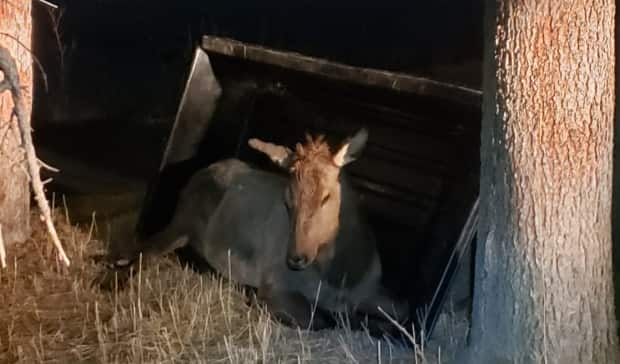
He adds that if you ever happen to see elk fall through the ice, you should never go into the water to help.
Instead, call the Parks Canada office at 403-762-1470.
"If people don't have their proper gear and stuff like that, they're just going to find themselves in trouble.… We'll respond to the incident with proper gear and equipment to extract the elk," he said.
However, since the last rescue mission on April 2, Fyten says the ice in the area has melted away, allowing the elk to swim across the river without getting stuck.

